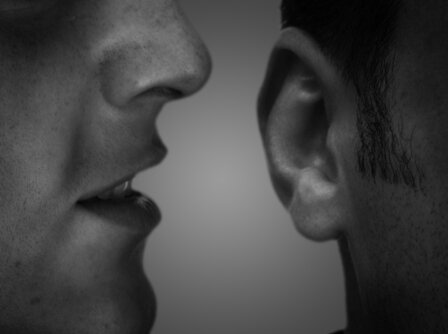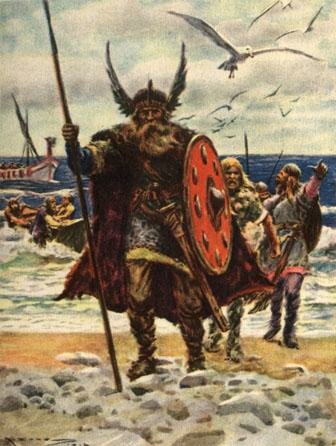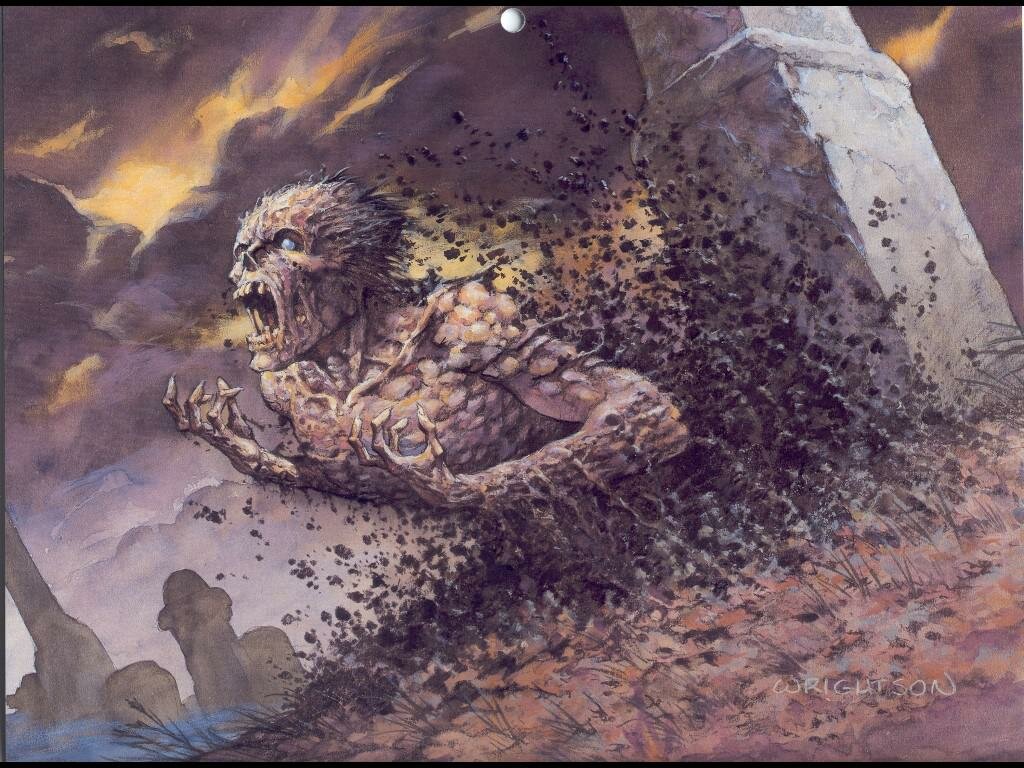Top 10 Viking Folklore
Suggested by SMSAs a culture, Vikings have often been misrepresented as a violent and ruthless people. Their reputation for rape and pillage has far outweighed their spiritual and philosophical aspects. Yet, like most successful nations, the Vikings enjoyed a folklore built on mythology and fables. The ten top Viking folklores, building from, ten to one, could well be those listed here.
10. The Sea and the Salt

Among other features of the Vikings, their seafaring skills were important in sustaining their communities. Therefore, in the folklore of the Vikings, the origin and nature of the sea hold a special significance. The tale explaining the presence of salt in sea water is a wonderful example of the use of fables to explain natural phenomenon.
The story draws on elements of daily life, such as the quern, and then adds a supernatural twist in that it magically grinds whatever the holder desires. It takes the hero on a journey to Hell where he deals with the Devil, trading bacon for the quern. Then he listens patiently to a sage-like old man, showing respect for his elders, and is the beneficiary of great reward.
But the story also invokes facets of humanity, such as greed and sibling rivalry. It offers a lesson that plays with the haste of greed and loss incurred by rash and proud desire. In its resolution, there is the dark impact on all humanity of selfish behavior of a few, as the sea becomes salted for ever more.
While the story of The Sea and the Salt is clearly a fable, it reflects the morality, environment and values of the Viking people.
9. Holy Thursday Nights

Among the Viking communities, Thursday nights were maintained as holy and held a revered status perhaps best appreciated as being the end of Thor’s day. Homes would be cleaned and made ready for the impending arrival of the deity. In anticipation, members of the household would remain as still as possible and the home would be a place of serenity and hope.
The event that was to take place was the visitation of Thor. He was expected to come into the home and was referred to as Gofar, the Good Father. His presence was an acknowledgement of his approval of the family and his support for their ambitions.
The cleanliness of the home was also of great importance as, after Thor had visited, Frigg was expected to arrive. As the wife of Odin and the knower of the fate of all men, Frigg was shown great respect. In addition, there was an impending possibility that she would give birth at any moment. Therefore, the floor had to be in an appropriate state for an event of such enormous significance. After all, her offspring would be Gods in their own right.
No doubt the instances were rare of Frigg going into labor on the floor of the living room having just popped in for a quick visit once Thor had left. But that was no reason for the Vikings to dismiss the possibility. After all, such faith in legend is what folklore is about.
8. Creation

Fundamental to any folklore is the story of creation, the beginning of all things. The legends of the Frost Giants hold tales of mighty and monstrous beings that existed before the coming of man, so the creation of the world in which the Vikings would dwell was a product of this mythology.
After a savage battle in which Odin, Ve and Vili, the sons of the Frost Giant Bor, had killed the Frost Giant Ymir, they decided to assure themselves of Ymir’s death. They mutilated the body so extensively that the parts that they scattered became the basis of the physical world.
The bones of Ymir became the mountain ranges and the smaller hard fragments became the rocks and pebbles of the seashore. Where they had worked, the earth had been pushed aside into rolling hills leaving gullies and huge depressions. Into these, the blood of Ymir was poured to create the rivers, lakes and seas.
The skull of Ymir was held aloft by four dwarves, whose race had risen from the soil, and the skull formed the sky. The dwarves were placed at each corner of the sky and named North, East, South and West. The legend continues and explains the creation of the stars, the sun and the moon using interacting aspects of the mythology.
Some would say that the violence and barbarism of the tale is redolent of the culture of the Vikings as warriors and as a people. But the death of a supernatural being as the basis of new life is a theme repeated in many cultures and religions and the presence of this being in the land, sea and sky helps present a respect for nature and the environment.
7. Thor’s Hammer

Relics have long been important elements to a broad range of cultures; the bones of Saints were said to hold healing powers for Christians, the blood of an executed King was gathered by his subjects as holy and an autographed baseball is cherished. So there is nothing unusual about the Viking’s respect for the hammer of Thor.
Commonly legend tells that Thor’s Hammer returned to him when he cast it, but in some areas there was the belief that it lay in the countryside waiting to be recovered. But unlike the leprechaun’s pot of gold, the hammer, or a bit of it, was found in the woods and farmland. Unfortunately, the fragments were actually stone-age arrows, the remnants of long-passed battles, but fact is rarely an issue in matters of belief.
Like other cultural relics, these pieces of “hammer” were used as charms against evil, sickness or trolls. They could be hung above the door of a home to provide protection against lightning strikes, fire, illness, and, of course, trolls. Similarly, they would provide protection for livestock if they were hung over the door to a barn and could be used to cure almost any ailment.
The Hammer of Thor was as strong a connection to the deity of the Vikings as a crucifix is to Christians. But it had the added appeal of being found in a place of battle and so carried the energy and power of a warrior, as well as sharing the mystery of faith.
6. Rolv Ganger

The legend of Rolv Ganger is one with a foot in both folklore and history. A man of enormous size, it is interesting that folklore does not label Rolv a giant as giants had played such important roles in Viking mythology. Perhaps this was a reflection on some of the less laudable aspects of his life and a reluctance to place an outcast on such a pedestal.
As a result of his unacceptable behavior, Rolv Ganger was exiled from Norway. He was then driven to find a suitable place to make a life for himself and his men. But this was never going to be an easy task and he found his only chance for success came with a sword in his hand. So fierce was his attack on Europe that he came to the court of France with a fearsome reputation.
In his dealings with the French King Charles the Simple, Rolv was able to gain the province of what became Normandy. This was a suitable land and, having married a duke’s daughter, he and his men were able to settle there. As Rolv and his men were men from the north, there is a school of thought that these were the first Normans.
Over time, Rolv Ganger ruled a large part of France. He fathered four daughters by his first wife and, after her death, married the daughter of a French King. It would seem that he had no son and heir, but his descendants ruled in both France and, through the agency of William the Conqueror, Britain.
The meeting of fact and folklore in the tale of Rolv Ganger are probably the only parts of his colorful story that don’t clash, which is probably as good an argument as any to celebrate his legend.
5. Freya

The folklore of most cultures is male dominated, but there is usually at least one strong female who tends to those needs of the people that the strong, warrior males can’t manage. So it was in Viking folklore, where Freya was the goddess associated with beauty, fertility, sorcery and love. But, just in case she was thought to be a little too genteel, she was also associated with gold, war and death.
Freya rode in a chariot, which has connotations of warlike behavior, but it was driven by two cats. She had a boar named Hildisvíni, a husband, Óðr, and two daughters, Hnoss and Gersemi. In addition, she had a cloak made of falcon feathers, which allowed her to fly in the shape of a falcon and a magical amber and gold necklace, Brísingamen, which signified her power as a magical practitioner and leader.
Most commonly Freya was called upon to assist in matters of the heart and to lend a hand in regard to issues of fertility. As a deity in a notoriously warlike culture, Freya had her worked cut out in a range of ways. She had to maintain the intensity of a warrior, while ensuring the place of love in the community of her people.
Within the community of the Gods, she was often a tragic figure. She wept for her long-absent husband, Óðr, and her tears turned to red gold when they fell on rocks and amber when they fell on water. Using pseudonyms, she searched for him so she could escape the advances of other powerful Gods, who wished to marry her.
Freya was not the typical female deity, but she was the kind of female deity that was needed by the Vikings. Her female charms and strong warrior core made her the perfect Goddess and in doing so an important part of Viking folklore.
4. Odin

Among the major figures of Viking folklore, few are as influential to the events and deities as Odin. Acknowledged as the deity overseeing War, Battle, Victory and Death, he also has a gentler side where he is associated with Wisdom, Poetry, Magic and Prophecy. Through the derivative Wodan, devotion to Odin is recognized in the dedication of Wednesday.
As a son of Bor, Odin killed Ymir and, with his brothers Ve and Vili, he used the remains of the Frost Giant to create the world of the Vikings. Furthermore, as the ruler of Valhalla, Odin provided a place for slain warriors in the afterlife. But probably his most encouraging feature was his inability to eat food as he consumed nothing but wine.
Odin’s spear, Gungnir, never missed its target, which led to him be pierced by it himself and remaining hung in that predicament for nine days. While pinned to the World Tree, he learned nine powerful songs and twice as many runes, the beginning of his great gift to his people, that of writing.
The tale sounds inconsistent, in that the most powerful of all deities subjected him to such hardship so as to give a gift to his people. Surely he could have achieved the same end without such sacrifice. But that was largely the point of the story. No matter how great you are, you must be prepared to pay your due.
There are many other stories that feature Odin throughout Viking folklore, but the constant is the use of the chief divinity to teach his people.
3. Thor
Of all the deities, characters and places in Viking folklore, none is as popular as Thor. Although Odin had perhaps a greater influence in overall scheme of things, the efforts of Marvel Comics, television cartoons and Kenneth Branagh’s film may have made Thor a more exciting character. The other possibility is that one could worship Thor without the need for human sacrifice, which most people feel is akin to slapstick comedy; it’s O.K. as long as it’s not happening to me.
The son of Odin and Fjorgyn, Thor was the God of law, fertility, the sky and thunder. The latter is probably also a reason for his popularity due to its immediacy. It’s one thing to acknowledge a God who has produced a good crop over the course of months, but it’s another to be addressed by one who lets rip with booming responses almost as quickly as a flash of lightning.
Thor was renowned for his goat-drawn chariot and the belt he wore, Megingjard, which doubled his strength. But it his hammer, Mjollnir, that was the most recognizable feature of the God. Thrown to create every lightning bolt, it became a symbol of religious fervor rivaling the Christian crucifix with relics and replicas displayed above the doors of homes and barns to protect the inhabitants.
The basis of Thor’s appeal may well be a personal thing, but there’s no doubt the passionate warrior with determination in his eyes, fiery red hair and a bold red beard was as big a character in Viking folklore as any other and bigger than most.
2. Jack Frost

Although popularized through literature and movies of other cultures, Jack Frost originated in the Viking mythological character, Jokul Frosti. He is the personification of winter and the extreme cold common to the winters of Scandinavia. His artistry, in creating the fern-like patterns which appear on windows in the morning, and his mischievous nature, felt through the nipping of extremities that are exposed to the cold, have become the things of folklore.
But against the aloof and seemingly cold character of Jack Frost, there is a deeper and sadder side that is seldom explained. Legend holds that Jack was originally a God, who controlled the presence of cold. He was notoriously in conflict with his cousins, the offspring of Logi, the God of fire and heat. Then, one day, he fell in love with a mortal girl.
He was so besotted by her that he asked his father to make him mortal so that he could marry her and live with her. Reluctantly, his father agreed on the understanding that Jack would lose all his supernatural powers. However, the joy of living with his love was disrupted when her life was placed in jeopardy. The only way to save her was to call on his supernatural powers, but in doing so he had to become an immortal again and relinquish her love.
The loss of his love led Jack to become a sad, distant and cold character; a God that longed for the comfort of his love.
1. Valhalla

The fierce and fearsome Viking warriors were taught from an early age that bravery in battle was the ultimate goal. Not only were their role models ferocious fighters, but their folklore echoed the beliefs and values that spurred them on to their destiny. Among the tales and lessons that prepared them for war, there was always a promised reward for their service, that being the honor and glory of eternity in Valhalla.
Translated as the “hall of slain heroes”, Valhalla was described as a magnificent hall with a roof made of shields and five hundred and forty doors. Every door was wide enough to allow eight hundred heroes marching abreast to enter and every night the warriors would celebrate with a feast at which Odin would be the host.
To reach the great hall one only had to die fighting bravely in battle and then be in the half of the slain warriors chosen by Odin. The Viking warrior would then be led by the Valkyries, warrior maidens, to the Valhalla where he would enjoy a fresh battle every day and recover from his wounds in time for the banquet.
The other half would accompany the Goddess Freya to the field of Fólkvangr. However, any warrior who died other than in combat or whose death was dishonorable would be sent to Hel.
Although, it can be argued that the legend of Valhalla was simply meeting the tastes of the community in their thirst for blood, there is an argument that identifies the tale as pre-echoing the folklore of cultures later in history. The virtual martyr status awarded to those who fought without concern for their own wellbeing has been used as an incentive for soldiers repeatedly, especially in situations where the need for exceptional sacrifice has been required.
Whether Valhalla exists or not the function of the folklore to inspire an army of violent warriors certainly worked for the Vikings.
The cultural significance of folklore rests in its use as an educational tool for the community. Through it the values of the society are illustrated and reinforced. In the case of the Vikings, a violent and warlike people, the courage and strength of the warrior was foremost. This dictated the role of women as in Freya’s regular weeping for her long absent warrior husband and the vision of the afterlife in Valhalla’s daily mortal combat from which the wounds would heal in time for the revelry of the nightly feast.
While we might find relating to the politics difficult, the necessity of such attitudes for the survival of Vikings was clear and it doesn’t take a great deal of digging or thinking to notice the similarities with some contemporary belief systems.











Popular News is that former company called Ensemble Studios and Microsoft are battling a court cases against the illegal use of Thor’s photo from their infamous game “Age of Mythology”. Copy right infringements are such a headache.
[...] https://akorra.com/2012/03/05/top-10-viking-folklore/ [...]